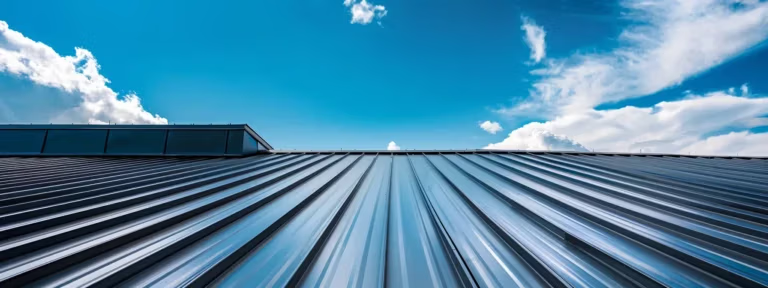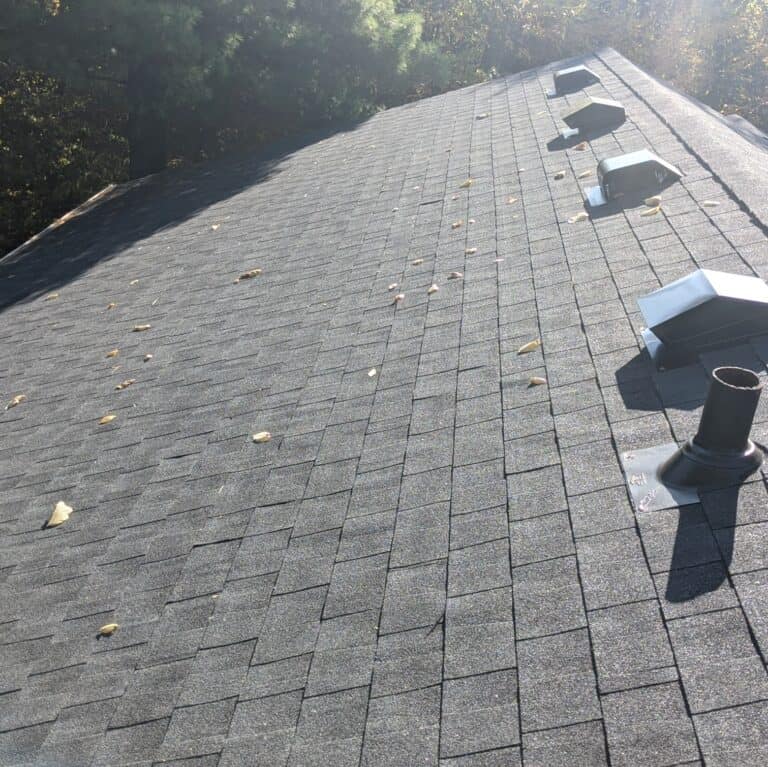Table Of Contents:
- How to Identify Flat Roof Bubble Damage Effectively
- Understanding Flat Roof Bubble Damage
- Key Signs of Bubble Damage in Flat Roofs
- Techniques for Inspecting Flat Roofs
- Tools and Equipment Needed for Damage Assessment
- Professional Methods for Repairing Bubble Damage
- When to Seek Help From Flat Roof Repair Services
- Conclusion
How to Identify Flat Roof Bubble Damage Effectively
Have you noticed irregularities on your flat roof that raise concerns about potential damage? Identifying bubble damage is critical, as it can lead to leaks and compromise the durability of your roof. In this article, we will discuss how to spot key signs of bubble damage, techniques for thorough inspection, and professional repair methods. By the end, you’ll understand how to address these problems proactively, helping you to avoid emergency situations caused by leaks and debris accumulation. Engaging with this content will empower you to protect your investment effectively.
Understanding Flat Roof Bubble Damage
I define flat roof bubble damage as the formation of raised areas on the surface of a flat roof, often caused by trapped moisture or poor installation. Understanding common causes like weather conditions and material defects is essential. Early detection can prevent emergency roof repairs, ultimately protecting your property. These insights are crucial for homeowners in Maryland and anyone looking to ensure their roofing systems remain intact.
Defining Flat Roof Bubble Damage
Flat roof bubble damage occurs when moisture becomes trapped beneath the roofing material, leading to the formation of raised areas or bubbles. This challenge often stems from poor installation or insufficient waterproofing, which can significantly affect the longevity of the roof. As professionals in the flat roofing industry, we’ve seen how ignoring these signs can lead to more extensive damage and costly repairs in the future.
In my experience, asphalt shingle roofs are particularly vulnerable to bubble damage in climates where there are frequent temperature fluctuations. Homeowners should routinely inspect their flat roofs, especially after severe weather, to catch any emerging issues early. Engaging a knowledgeable flat roof company for maintenance can help ensure that such problems are addressed promptly, preserving the integrity and performance of your roofing system.
Common Causes of Bubble Formation
One major cause of bubble formation on a commercial flat roof is water damage. When moisture becomes trapped beneath the roof membrane, it creates pressure that leads to the development of bubbles. This often results from poor installation practices or insufficient roof coating that fails to create a proper seal against water infiltration. I have observed that during heavy rainfall, roofs not designed for effective drainage significantly increase the risk of such bubble damage.
Another contributing factor to bubble formation is the use of low-quality materials during roof installation. If the materials do not meet industry standards, they may not withstand environmental stress, leading to premature failure and the need for roof repair services. Additionally, routine maintenance is vital, as neglect can turn minor issues into emergency roof repairs. Homeowners should prioritize inspections and repairs to minimize the risk of extensive damage:
- Regularly inspect the roof for any signs of moisture or damage.
- Ensure that the roof coating is applied correctly for optimal protection.
- Engage professional roof repair services for timely maintenance and repairs.
Importance of Early Detection
Early detection of flat roof bubble damage is crucial for maintaining the safety and integrity of your roofing system. When I perform inspections, I emphasize looking for signs of wear or bubbling, as these can indicate underlying moisture issues. Identifying a roof leak repair need sooner rather than later can prevent the growth of mold and other complications that could lead to more extensive damage and costly repairs.
Addressing bubble damage promptly also helps protect your investment and extends the life of your roof, whether it’s a metal roof or another material. I often tell homeowners that neglecting visible signs can transform minor problems into emergency situations. By being proactive in monitoring and arranging for repairs, you not only ensure safety but also maintain the value and performance of your roofing system.
Key Signs of Bubble Damage in Flat Roofs
In my experience, identifying flat roof bubble damage involves recognizing key visual indicators of roof bubbles, such as raised areas on the membrane. I also look for signs of moisture accumulation that can lead to further issues, particularly in commercial roofs. Additionally, structural deformation may indicate underlying problems that require urgent attention, especially after severe weather conditions. Each of these aspects is critical for effective roofing services to ensure the long-term health of your roofing system.
Visual Indicators of Roof Bubbles
One of the most noticeable visual indicators of bubble damage on a flat roof is the presence of raised areas or blisters in the membrane. These bubbles often form due to trapped moisture and can become exacerbated by ponding, where water collects on the surface of the roofing. Maintaining the integrity of the roof coating is vital, as a compromised coating can lead to accelerated damage and ultimately harm your commercial flat roofing system.
In my experience, it’s crucial to regularly inspect your roofing for any signs of deformation or bubbling, especially after heavy rain or storms. If you observe any issues, such as discoloration or excessive swelling, these may indicate underlying problems that require immediate attention. Addressing these signs early on not only helps maintain the roof’s reputation but also prevents further deterioration and costly repairs:
- Regular inspection of flat roofs for raised areas or blisters.
- Monitoring for ponding water that can compromise the roof membrane.
- Ensuring the roof coating is in good condition to avoid moisture infiltration.
How to Identify Moisture Accumulation
Identifying moisture accumulation on a flat roof starts with thorough inspection. As a roofer, I recommend looking for signs of discoloration or dark spots on the surface, which often indicate trapped water beneath the membrane. It’s essential to engage in regular checks after heavy rains, as this is when leaks are most likely to manifest. Recognizing these initial signs early can help prevent the need for a flat roof replacement down the line.
Additionally, I advise monitoring any unusual sagging or bulging areas on your flat roof, as these can be clear indicators of moisture buildup. If I notice persistent water pooling in certain sections, it often calls for immediate attention to avoid extensive damage. Addressing these concerns promptly not only reinforces the integrity of your flat roof installation but also safeguards against potential leaks that could compromise your property further.
Recognizing Structural Deformation
Recognizing structural deformation on a flat roof involves careful observation, particularly after significant weather events like hail or snow. I often find that these conditions can exacerbate underlying issues, leading to noticeable sagging or bulging. Paying attention to these signs early is essential, as they can indicate trapped moisture or inadequate support that could eventually require extensive repairs or commercial roofing replacement.
In my professional experience, I have seen how neglecting structural deformation can lead to more severe problems down the line. For example, if a commercial roofing system shows significant distortion, it is crucial to assess the situation and address it promptly. Engaging with local roofing experts for thorough inspections can help ensure that any potential damage is managed before it escalates, ultimately protecting your investment and maintaining the integrity of your roof.
Techniques for Inspecting Flat Roofs
To effectively identify flat roof bubble damage, I recommend conducting a comprehensive visual inspection, which allows for the early detection of potential issues. Utilizing infrared technology can further enhance detection capabilities, especially for identifying trapped moisture beneath the roof membrane. Performing a moisture scan is equally vital, as it helps verify the performance integrity of materials like polyolefin and bitumen, ensuring customer satisfaction and adherence to warranty requirements.
Conducting a Comprehensive Visual Inspection
When I conduct a comprehensive visual inspection of a flat roof, I systematically evaluate the entire surface for signs of bubble damage. This method involves looking for visual indicators, such as raised areas or blisters, which can suggest trapped moisture beneath the membrane. By taking note of any inconsistencies, I can determine if flat roof bubble repair is necessary and ensure that the roof installation is functioning as intended, especially in areas vulnerable to poor drainage.
In my experience, thorough inspections not only help pinpoint existing issues but also prevent future complications. Engaging in regular assessments allows me to identify potential problems early, enabling timely interventions before they escalate into more significant damage. Utilizing flat roofing services for ongoing renovation and maintenance is essential, as this proactive approach safeguards the roof‘s integrity and extends its lifespan, ultimately protecting the investment made by the property owner.
Utilizing Infrared Technology for Detection
Utilizing infrared technology for detecting flat roof bubble damage has proven to be an effective method in identifying hidden issues. As I assess roofing systems, infrared imaging allows me to locate temperature differences beneath thermoplastic or polyvinyl chloride membranes. This can indicate trapped moisture, which is often a precursor to bubble formation, especially around vulnerable areas such as flashing and tar applications.
This method not only enhances my ability to detect potential problems early but also provides insight into the energy efficiency of the roofing system. By identifying areas where heat is lost or retained, I can recommend strategic repairs that will not only address the immediate bubble damage but also contribute to improving the overall performance of the roof. Engaging in this proactive approach ensures the longevity of the roofing system and safeguards my clients’ investments.
Performing a Moisture Scan
Performing a moisture scan is a crucial technique for identifying bubble damage on flat roofs. I utilize specialized equipment that detects temperature variations across the roof surface, which can indicate areas where moisture is trapped. This process is especially important in commercial roofing services, as wind-driven rain can easily infiltrate and compromise the roof integrity, leading to costly issues down the line.
As I assess the roof, I focus on areas around potential problem spots, such as seams and penetrations. An effective moisture scan helps me pinpoint where interventions are needed, allowing for timely repairs before considering a roof replacement. My goal is to ensure that the roofing system remains functional, providing peace of mind for customers by maintaining a robust structure that withstands environmental challenges.
Tools and Equipment Needed for Damage Assessment
For effective assessment of flat roof bubble damage, I recommend using a variety of inspection tools like moisture meters and infrared cameras to identify hidden moisture beneath thermoplastic olefin membranes. Safety equipment, including harnesses and helmets, is essential during roof inspections to protect against falls. Additionally, essential maintenance supplies, such as sealants and repair kits, ensure that I am prepared for immediate interventions once issues are identified.
Recommended Inspection Tools
For comprehensive flat roof assessments, I rely on a range of recommended inspection tools that enhance my efficiency and knowledge. Moisture meters are particularly valuable as they provide immediate feedback regarding the presence of trapped moisture beneath the membrane. This is crucial for preventing further bubble damage on residential flat roofs. Additionally, infrared cameras help me identify temperature discrepancies that can indicate problematic areas where moisture may accumulate.
Along with these high-tech solutions, I emphasize the importance of traditional tools like a good flashlight and safety gear. Ensuring proper safety equipment during inspections protects against potential hazards while allowing me to thoroughly review metal and other roofing surfaces. By integrating both modern technology and practical tools, I strive to offer exceptional customer service while ensuring our clients’ roofs remain in optimal condition and free from damaging bubble formation.
Safety Equipment for Roof Inspections
Ensuring safety during flat roof inspections is paramount. I always wear appropriate safety gear, including a harness and helmet, to protect against falls and other potential hazards that may arise while assessing the roof condition. Investing in high-quality, environmentally friendly safety equipment not only optimizes my safety but also reflects a commitment to reducing the environmental impact of roofing work.
Additionally, I recommend using non-slip footwear designed for roof work. This type of footwear enhances traction on various roofing materials, reducing the risk of accidents during the inspection process. By prioritizing safety equipment that is environmentally friendly and effective, I can conduct thorough roof inspections while safeguarding both my well-being and that of the roofing system itself.
Essential Maintenance Supplies
In my work assessing flat roofs, I find that having essential maintenance supplies on hand is critical for addressing any bubble damage effectively. High-quality sealants are key for making immediate repairs, as they can help prevent further moisture infiltration and protect the roof‘s integrity. Moreover, having repair kits that include patches and adhesives allows me to engage in quick fixes during inspections, minimizing potential long-term damage.
Equipping myself with tools such as a caulking gun and brushes also enhances the efficiency of my repair efforts. With these supplies, I can reinforce areas around seams and penetrations where leaks are likely to occur. This proactive approach not only aids in preventing flat roof bubble damage but also ensures that I can provide my clients with reliable roofing solutions that prolong the life of their systems.
Professional Methods for Repairing Bubble Damage
To effectively address flat roof bubble damage, I focus on three key areas: assessing the extent of the damage, selecting appropriate repair techniques, and ensuring long-term solutions. By evaluating the severity of the bubbles, I can determine the best methods for repair. Implementing effective techniques not only resolves the current issues but also helps in preventing future problems, ultimately safeguarding the integrity of the roofing system.
Assessing the Extent of Damage
Assessing the extent of bubble damage on a flat roof begins with a thorough visual inspection. I evaluate the size, location, and number of bubbles present to determine if further investigation is needed. Knowing that some areas may indicate more significant underlying issues, I prioritize sections where the membranes appear to be significantly damaged or when multiple bubbles cluster in one area.
After identifying the visible damage, I often conduct additional tests to pinpoint moisture levels under the membrane. Using moisture meters or infrared technology allows me to detect trapped water not visible to the naked eye. This evidence helps me decide if repair or replacement is the best course of action, keeping my clients informed and their roofs protected from further deterioration:
- Perform a comprehensive visual inspection.
- Assess size and quantity of bubbles present.
- Utilize moisture detection tools for thorough evaluation.
Selecting Appropriate Repair Techniques
Selecting appropriate repair techniques for flat roof bubble damage calls for a careful assessment of the specific issues present. In my experience, if I find minor bubbles, I often proceed with a simple patching method, which involves carefully cutting away the damaged membrane and applying a new layer. For more extensive bubble damage, I may recommend a more thorough repair approach, such as re-adhering the membrane or, in the worst cases, a partial roof replacement, ensuring the integrity of the entire roofing system is maintained.
It’s essential to choose repair techniques based on the severity and location of the damage. Utilizing high-quality materials and industry-standard practices is crucial for ensuring long-lasting solutions. I frequently emphasize to my clients the importance of addressing these repairs promptly to avoid escalation into more significant issues, as neglecting visible bubble damage can lead to costly repairs down the line and compromise the overall safety of their property.
Ensuring Long-Term Solutions
For ensuring long-term solutions to flat roof bubble damage, proactive maintenance plays a critical role. I emphasize regularly scheduled inspections to catch early signs of moisture accumulation and bubble formation. Engaging a qualified roofing company for ongoing assessments can detect problems before they exacerbate, ultimately prolonging the roof‘s lifespan and maintaining its structural integrity.
Implementing high-quality repair techniques is essential for preventing future issues. After addressing any bubble damage, I recommend applying protective coatings that enhance waterproofing and resist environmental stress. This practice not only safeguards the roof against moisture infiltration but also reinforces the roofing system’s durability against harsh weather conditions.
- Regular inspections for early detection of damage.
- Engaging a qualified roofing company for assessments.
- Implementing high-quality repair techniques.
- Applying protective coatings for enhanced durability.
When to Seek Help From Flat Roof Repair Services
If you notice signs of flat roof bubble damage, it’s time to seek professional assessment. I’ll discuss the key indicators that suggest you need expert intervention, how to choose the right roofing repair service, and the important questions to ask your contractor. Understanding these elements ensures you make informed decisions and maintain the integrity of your roofing system.
Signs You Need Professional Assessment
If you observe any noticeable blisters or raised areas on your flat roof, it is an indicator that you need a professional assessment. These visual signs typically mean that moisture is trapped beneath the roofing membrane, which can lead to more serious damage if left unaddressed. As a roofer, I recommend not delaying to seek help; timely intervention can prevent further deterioration of your roofing system.
Additionally, regular checks for dark spots or discoloration on the roof surface can signal potential issues that warrant professional attention. If you notice persistent water pooling in specific areas, this can compromise the roofing integrity and lead to costly repairs down the line. It’s best to consult with flat roof repair services to evaluate the situation thoroughly and implement effective solutions:
| Signs of Bubble Damage | Recommended Action |
|---|---|
| Blisters or raised areas | Seek professional assessment |
| Dark spots or discoloration | Consult flat roof repair services |
| Persistent water pooling | Evaluate and repair immediately |
How to Choose the Right Repair Service
When choosing the right repair service for flat roof bubble damage, I emphasize the importance of selecting a contractor with a proven track record in flat roofing systems. Look for companies that specialize in this area and have positive customer feedback, as their experience can significantly affect the quality of the repairs. Assessing credentials and memberships in industry associations can also provide insights into their professionalism and commitment to best practices.
Another key factor to consider is communication and customer service. I believe that a reliable roofing contractor should be willing to discuss the issues with you in detail and provide transparent solutions. By asking questions about their inspection processes and repair techniques, you can gauge their expertise and ensure they are prepared to address the specific needs of your flat roof, ultimately protecting your investment.
Questions to Ask Your Roofing Contractor
When discussing potential flat roof bubble damage with your contractor, I advise asking about their specific experience with flat roofing systems. Understanding their level of expertise in identifying and repairing bubble damage can give you confidence in their ability to address your concerns effectively. Additionally, inquire about the types of materials they recommend for repairs and how these choices impact the durability and maintenance of your roof.
It’s also essential to ask how they approach inspections for hidden moisture, as this can be a key factor in preventing future bubble issues. In my experience, a reputable contractor should utilize advanced techniques such as infrared scanning to detect moisture beneath the roofing membrane. By asking these questions, you can ensure you’re collaborating with a knowledgeable professional committed to preserving the integrity of your flat roof.
Conclusion
Effectively identifying flat roof bubble damage is crucial for maintaining the integrity and longevity of your roofing system. Regular inspections for visible signs, such as raised areas and discoloration, allow for early detection of underlying moisture issues. Utilizing advanced techniques like infrared scanning and moisture meters enhances your ability to pinpoint problems before they escalate. By prioritizing proactive assessments and timely repairs, homeowners can protect their investments and avoid costly emergencies in the future.





